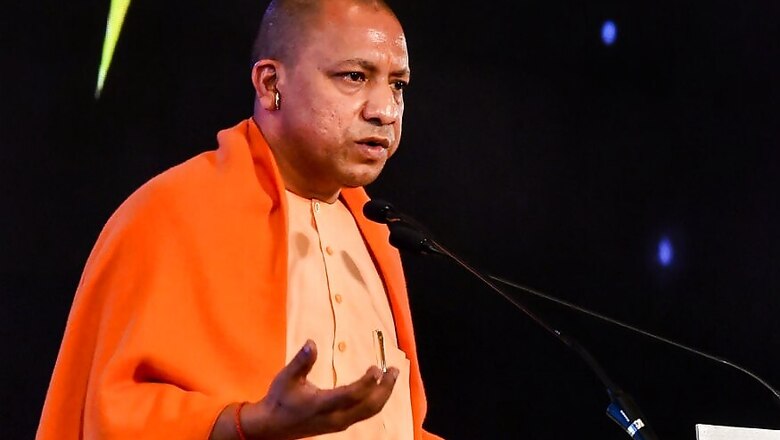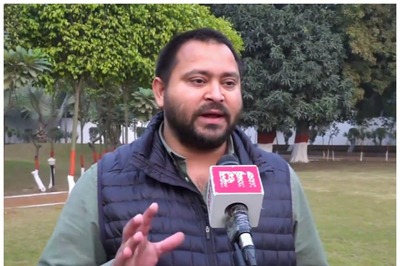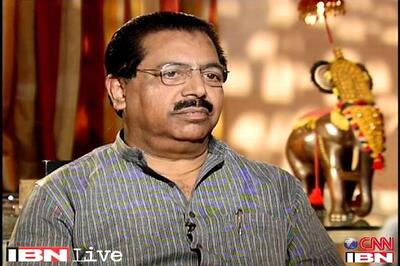
views
New Delhi: The centre on Wednesday come down heavily on the BJP-led Uttar Pradesh government for its move to include 17 communities belonging to OBCs in the Scheduled Castes (SC).
Thawar Chand Gehlot, Union minister for social justice and empowerment, condemned the move in Rajya Sabha on Wednesday and said it was “not in accordance with constitution,”
Gehlot asked the Yogi Adityanath government to follow due process in including Other Backward Classes (OBC) castes in the SC list. Only the Parliament has the constitutional power to make changes to the SC list, he noted.
The Uttar Pradesh government had on June 24 directed district magistrates and commissioners to issue caste certificates to 17 OBCs - Kashyap, Rajbhar, Dhivar, Bind, Kumhar, Kahar, Kewat, Nishad, Bhar, Mallah, Prajapati, Dhimar, Batham, Turha, Godia, Manjhi and Machua.
The Bahujan Samaj Party (BSP) also voiced against the move in the Upper House. "The power of Parliament cannot be upsurged by a state,” BSP leader Chandra Misra said. He, however, clarified that his party is in favour of including the 17 OBC castes in SC list if due procedure is followed and the percentage of SC quota is increased.
President’s Assent
The caste politics in UP, over the past two decades, has dedicatedly strived to impress the 17 OBC as this community could collectively form a strong vote bank in the state — the Scheduled Castes. Speaking about UP government’s recent move, senior advocate Mehmood Pracha told News18 that the constitution does not define the persons belonging to SC or ST, it only includes provisions for enabling to their equal status in society. The President of India notified a list of castes and tribes in the country only once in 1949.
“The procedure for notifying a community as SC or ST is similar. But when this is proposed from a state, it goes through multiple assessments,” he said.
A community may be identified as SC if the Registrar General of India (RGI) and the National Commission for Scheduled Castes (NCSC) agree that the group suffers from “extreme social, educational and economic backwardness arising of traditional practice of untouchability,” former Union minister for social justice and empowerment, Vijay Sampla, had stated in the Parliament in 2017.
The NCSC is the investigating body into all claims of inclusion. An order by ministry of social justice and empowerment (MoSJE) on “modalities for deciding claims for inclusion” maintains that while examining the cases, the commission should consult experts, organisations and institutions in the fields of anthropology, ethnography and other social sciences, in addition to the state governments, RGI and the Anthropological Survey of India, on a regional basis.
It also recommends holding public hearings in areas relevant to the claims under examination.
But the only way any change may be made to the SC and ST list is via Article 341 and Article 342, which requires the final consent of Parliament, said Pracha.
“A state can first propose to the cabinet, and then to the Parliament, for a change in the list as per its assessment, only if the RGI and the NCSC also consent to it,” said Pracha.
Identifying OBC
It is important to distinguish between the conditions under which a community is identified as OBC, SC or ST to understand what meaning each categorisation holds.
BK Chaturvedi, cabinet secretary in the former Manmohan Singh government, told News18 that although the process of notifying a community as OBC is very state-centric, it also must be agreed to by the National Commission for Backward Classes (NCBC).
“In every state, there is a separate commission which identifies communities as SC or ST. Similarly, there is an OBC commission in every state that identifies communities locally. This state-centric approach helps by allowing local conditions to decide the categorisation,” he said.
For instance, the Meena community is identified as Scheduled Tribe in Rajasthan but is not identified as the same in other states. This identification is based on certain criteria of social and educational backwardness, Chaturvedi pointed out.
The NCBC has adopted a low social position in the traditional caste hierarchy of the Hindu society; lack of general educational advancement among the major section of a caste or community; inadequate or no representation in government services; and inadequate representation in the field of trade, commerce and industry as traits for identifying OBCs.
In fact, the NCBC, NCST and the National Commission for Scheduled Caste (NCSC) are given constitutional status under the constitution, which gives them the same powers as a civil court.
However, Chaturvedi said things may not look very good for the OBCs after the government’s new amendment for the EWS quota.
“The criteria for inclusion in the OBC has become difficult to grasp because of the eligibility criteria for the creamy layer and the backward upper castes. For the OBC, the income eligibility criteria does not include income from salaries or agricultural land, while for the EWS it does,” he said.
Why Become an SC?
Mehmood Pracha said to understand the need to make SCs out of the OBC communities, Article 340, Article 341 and Article 342 should be read together and not in isolation.
“The condition of identification of OBC is assessed by a commission appointed by the President. It investigates the condition of inclusion on the basis of educational and social backwardness of a community and recommends steps to uplift them,” he said.
A commission’s recommendations may include any form of positive action or affirmative action, including but not limited to, reservation and financial assistance.
However, what differentiates between the three groups is the degree of empowerment and protection that the constitution guarantees to each one of them, especially in terms of political representation.
“If a community is declared as SC, its members are provided with reservation in jobs, education promotions and electoral representation in Parliament and state Assembly. They are protected under special laws like the Scheduled Caste and Scheduled Tribe (Prevention of Atrocities) Act, 1989. They also enjoy the benefits of numerous central government schemes,” said the senior advocate.
“But, the OBCs are not given these benefits. The constitution entitles them to reservation in public sector employment and higher education only,” he added.
Political Attempts for Inclusion
The BJP state government’s June 24 move to include 17 OBC castes was taken in consideration of the Allahabad High Court Order of March 29, 2017.
After more than two years, the UP government’s directive following the high court order assumes significance due to its electoral outcomes. Had this move been made back in 2017, it could have become a post-poll disaster.
If this move was carried out ahead of the Lok Sabha polls, it could have possibly upset existing SC communities, thus damaging the electoral chances of the BJP government. Although the government does not release census data on caste, the 17 OBC castes comprise close to 15 per cent of the state’s population.
Nevertheless, the Yogi Adityanath-led government in Uttar Pradesh has not been the only government pushing to include 17 OBC castes into the SC list.
A similar attempt to include the same 17 OBC castes in the SC list was carried out by the Samajwadi Party (SP) government led by Mulayam Singh.
In 2005, the SP government amended the Uttar Pradesh Public Services Act, 1994 to give the benefit of reservation to the 17 OBC communities by including them in the SC list. The Allahabad High Court had termed the 2005 amendment unconstitutional on the very same grounds as today.
In 2013, the Akhilesh Yadav-led SP government had even passed a resolution seeking the inclusion of the 17 OBC castes in the SC list, which the centre had again held unconstitutional.
A reattempt was made in 2016, where the same government sent a fresh proposal to the centre with proper assessment of the 17 communities. However, the Allahabad High Court again rejected the proposal, which also faced legal opposition this time.
The court had ordered that no caste certificates be issued to these communities.
Four years later in UP, the parties have changed but the intention and motivation to include these 17 OBC castes in the SC list remain the same.




















Comments
0 comment